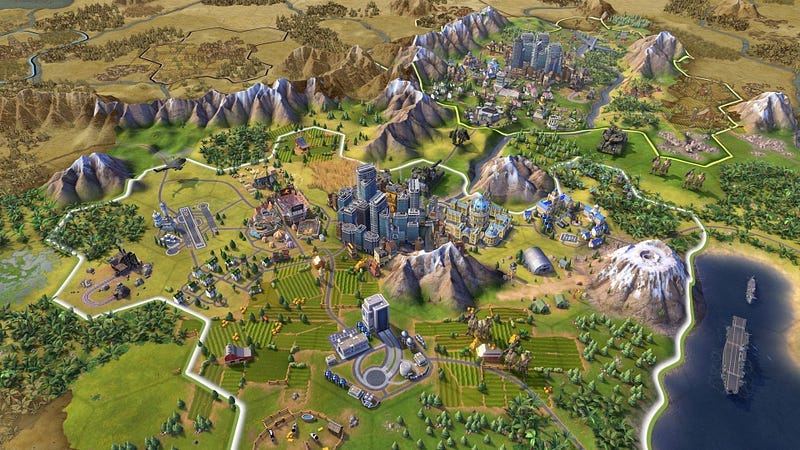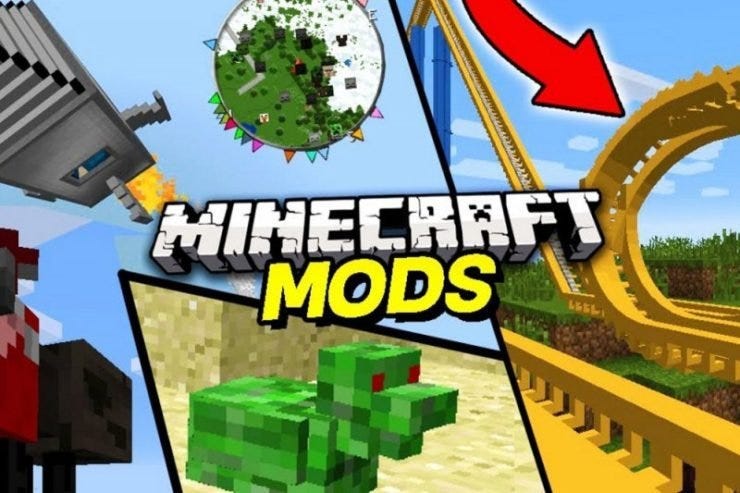The Four Reasons We Must Pay Attention to the Autonomous World
AW: enable fair metagames, offer community-driven composability, game interaction, and customizable frontends. Be an early adapter.

The boom during the last bubble was Decentralized Finance (DeFi), and some people say that the next bubble trend might be Autonomous World (AW). I also believe in this, and I would like to explain the reasons in this article.
What is the Autonomous World (AW)
Before diving into the main topic, let me explain what AW is.
Detailed explanations have already been widely given, so let me share what is AW briefly.
Looking back on history, Bitcoin liberated currency from central authorities, and Ethereum liberated operations through smart contracts. Now, what remains yet to be freed? The answer is the world. And now, we have the potential to emancipate the world from centralized authorities using blockchain technology.
Originally, AW was developed as a fully onchain game. But we realized that its potential goes beyond just a game — it’s a platform where we can carry out various activities. In other words, it’s a world.
Because of the nature of blockchain, AW is persistent and open.
The way people create their world will be completely different before and after AW. Before AW, we had to follow regulations made by someone, and we couldn’t freely compose. But with AW, it’s different. In AW, we first establish the boundaries of the world. And within those boundaries, free composability is allowed. Once created, regardless of whether you wish for it or not, it operates autonomously. That is to say, creating an AW is similar to creating a new planet. We have all been given the right to be Creator Gods.
Here’s one of my favorite quotes: “The rocks and deserts on Mars keep existing if someone stops believing in their World. Nobody can “unplug” Mars.” by 0xPARC.

The History of “Worlds”
When talking about AW, we can’t ignore Dark Forest and OPCraft.
I’ll leave out Dark Forest for now, but it’s worth exploring deeply since it demonstrated the wide potential of AW by this link.
OPCraft is the fully onchain version of Minecraft. It was created by the MUD team and freely developed by the community. Though it was only for a short period of about two weeks, it was full of excitement. Eventually, a dictatorship emerged. Some may see this as chaos, but it was inevitable and incredible. The system had a flaw that allowed for virtually unlimited diamond mining, the currency of OPCraft. The person who spotted this flaw first gained power and established a dictatorship. In a world, anything that can be subject to hacking will inevitably be hacked. The hacker then gains power and sets new rules, and those too are eventually hacked. This cycle continues to repeat itself.
I think the most interesting onchain game so far is Curve War. It was a battle of wisdom at its peak. The winner was the one who came up with an easily understandable solution first.
Isn’t the history of our world something similar? It’s easy to learn the core ideas of history, but making history is much more difficult.
Essentially, people acknowledge the rules of the world, but sometimes these rules are flawed or individuals seek greater benefits. As a result, they may hack the system and establish new rules, shaping history in the process. With this understanding of the world established, we can now delve into our main topic.
First Reason
The history of the world until now can be rephrased as a history of establishing new rules and hacking. Those who were able to gain new benefits, and those who suffered disadvantages, have been hacked. These were opportunities given only to a very limited number of people, due to issues of status and luck. After all, it was inevitable as only a very few people had a correct understanding of the current world situation.
However, as we can see from OPCraft and curve war, how sad it is that such interesting games have been given only to such a limited number of people. I would like to call this kind of game a metagame. It’s not a game that takes place within the world, but a game that takes place from a perspective that is one step removed from the world. Although there have been simulation games like Civilization, this metagame is a different real thing, and its freedom is in a different dimension.
Now, we are in a situation where we can play metagames. This is because in AW,
It’s easy to recognize the correct situation in the world.
The chance to hack the world is given to anyone.
AW defines the shape of the world through smart contracts, so if you can read the code, it’s easy to recognize the correct situation of the world. What a low hurdle compared to grasping the tacit understanding given only to the privileged class until now! There’s no need to pay huge bribes to access information!
Next, the chance to make the world’s laws is available to anyone. The discussion for improving the world’s rules should be open, anyone can propose improvements to the world’s rules, and if approved by the community, anyone can change the laws.
If you can establish a rule with a flaw that only you notice and deceive the community, you can even become the king of the world. Of course, you have to consider the possibility of a hard fork. lol. What an interesting and new intellectual game this is.
Moreover, this frees people from trivial matters like status and birth, dramatically increases the number of smart people involved in the world’s politics, and this means a dramatic improvement in the speed of improving the world’s rules. The world always tries to be better, so the world becomes better faster. I wonder if it can be used as a testing ground for improving the rules of the real world. Oh, how wonderful AW is.
Here, some may think that since AW is defined by the boundary lines of fixed contracts, such metagames cannot be played. However, the project we are working on, PixeLAW, is designed to allow such metagames, as the name suggests.
In simple terms, PixeLAW starts from very small rules. These are the rules about the land (array of pixels) and the rules about how to decide the rules and a little bit of the rules to make it interesting. The details are still undecided… By defining the rules determined within the scope of the rules about how to decide the rules as the boundary lines of the world, PixeLAW enables the play of metagames.
To ensure that PixeLAW can be played with metagames, we anticipate that DAO will make adjustments to the world’s laws right from the start after the initial rules have been established.
Second Reason
The second reason lies in composability. Isn’t this one of the things that is most emphasized when introducing AW in general? Composability means that the community can freely add components of AW. The shape of the AW world is determined not by its components, but by the world’s boundary lines defined by contracts, so as long as the components are within those boundary lines, they can be freely added. This composability is greatly promoted by the ECS system. If you want to know more, please check out this page or this one for details. The potential for composability by the community fosters development. Until now, there was almost no chance for additional development in games, even if there was something you wanted to develop. There are games like Minecraft where community composability is active, but they are very limited. There is no such worry in AW.
I would like to think a little deeper about composability, but I am skeptical about whether it is completely permissionless. I believe that for new systems that impose restrictions on people’s actions, approval from the community is needed. I believe that the development of other new games and systems, or the addition of components for them, should be permissionless.
The third reason
AW is not just a fully onchain game, but a world. Up until now, you might have imagined a single game, but that’s not the case. On a single AW, there should be multiple games, as well as other infrastructures such as markets and DEX. These should be defined by a certain contract that sets the boundaries of the world, and as long as they exist within those boundaries, interoperability is achieved. Until now, it has been very difficult to create a complex mix of multiple games, but with AW, it becomes easy. However, this is such a new concept that no one knows how well it will work or whether it will provide a new and interesting experience. But it is worth building and exploring.
The AW we are currently building, PixeLAW, is attracting attention from the community for this reason. Simply put, PixeLAW is a pixel art AW, but it is designed to maximize the features of AW as I see it. In PixeLAW, each pixel has RGB values, and these numbers can be used as information to build systems, including games. For example, it is possible to build a snake game by considering green squares as snakes or to play rock-paper-scissors by assigning roles to three colors. These games exist simultaneously on a single AW. Here, it is possible to consider interactions between games.
For example, the snake dies when it hits a stone square, gets longer when it hits a paper square and gets shorter when it hits a scissors square. Such specifications can be considered. This might not seem very appealing because it’s too much of a toy example, but there are certainly new user experiences waiting to be discovered.
Let’s build and explore together.
The fourth reason
The last notable point of AW is that you can change the look of the world. The essence of AW is that the boundaries of the world are set by contracts, and the state of the world is etched into the blockchain. Therefore, in essence, it is a state machine. What this means is that only mechanical information is etched into the blockchain, so the look does not involve the debate of whether it is inside or outside the boundaries of AW. You are free to change it.
Let’s make the discussion concrete: PixeLAW again.
On the surface, PixeLAW is pixel art. However, in its internal state, a pixel has coordinates and RGB values. Let’s think about the front end from here. The easiest one is pixel art. Just display the position and RGB values faithfully. As demonstrated in r/place, pixel art is very interesting in itself.
Next, let’s think about the situation after the game is implemented. Assuming that the game itself is built on the system side, for example, let’s assume that a component called Unicode that represents emojis is added for visual clarity.
At this time, for one AW, the first front end remains pixel art, and the other front end displays emojis representing the state of the game. You can use them according to your needs.
Furthermore, the possibilities for front ends to enhance user experience are endless. For example, it is possible to prepare a completely new front end only for rock-paper-scissors focusing on a single pixel.
And since creating front ends does not change the boundaries or state of AW, you can make as many as you want.
Even more, as long as you do not intend to write to the state of AW, you are free to do anything to improve user experience.
What endless possibilities are spreading?
Conclusion
Autonomous World(AW) is notable for the following four points.
New game genre: Enables fair metagaming
Composability by the community is guaranteed
Interoperability. At the moment, especially the interaction between games
Free customization for UX.
Aren’t they all fresh to you? That’s natural. Because you are a super early adopter.
Finally
Thank you very much for reading this far. Lastly, let me advertise the project I am currently working on. To my knowledge, PixeLAW is the first project in the world designed to maximize all four features mentioned above. PixeLAW started from the ETH Global Hackathon in Paris and received the 1st prize from Starknet. Please check the showcase, including the current codes.
More details about PixeLAW will be explained at another opportunity.
The latest information can be obtained from my Twitter(@0xsyora) or PixeLAW’s Twitter (@0xPixeLAW). Please follow us and stay onchain.









